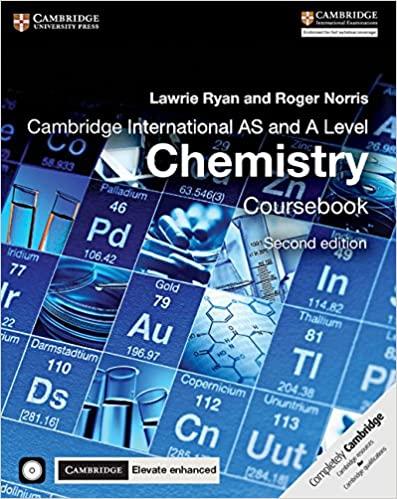a. In the experiment described in Question 1, a student weighed a mass of 11.35 g of
Question:
a. In the experiment described in Question 1, a student weighed a mass of 11.35 g of the oxide of copper on a balance reading to the nearest 0.05 g. What was the percentage error in this measurement?
b. Another group of students carrying out the same experiment found that their sample of the oxide of copper contained 13.24 g of copper and 3.26 g of oxygen. What is the most likely formula of the oxide of copper? (Relative atomic mass of Cu = 63.5; O = 16.0.)
c. Nine out of the ten groups who tackled the experiment obtained results consistent with those of the group described in part b. The other group’s measurements resulted in a ratio that suggested the formula of the oxide was Cu2O.
i. What do we call their result when plotted on a class graph of moles of oxygen against moles of copper?
ii. How would you deal with this result when drawing the line of best fit?
iii. Give a possible explanation for the Cu2O result obtained.
Data From Question 1:
In an experiment to determine the formula of an oxide of copper, the copper oxide was reduced by hydrogen gas. The hydrogen was passed over the oxide of copper in a boiling tube with a hole near its end. The excess hydrogen was burnt off at this hole. The copper oxide was placed inside the boiling tube, which was clamped in a horizontal position, in a porcelain boat and was heated strongly.
Step by Step Answer:

Cambridge International AS And A Level Chemistry Coursebook
ISBN: 9781316637739
2nd Edition
Authors: Lawrie Ryan, Roger Norris





